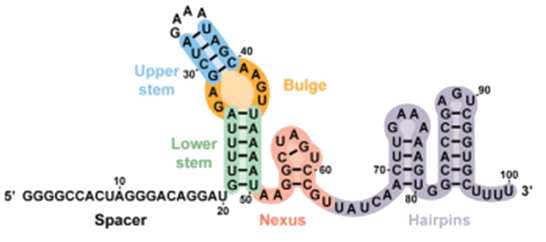Team:Waterloo/Description
Project Description
Motivation
The clustered regularly interspaced short palindromic repeats (CRISPR)-Cas9 system is an astounding tool with many applications in synthetic biology. Since its popularization, CRISPR papers have flooded major journals and many iGEM teams have worked to improve its use as a genome editing tool. The 2015 Waterloo team is taking a three-pronged approach to expand upon previous research for wider, more efficient, and more flexible use of CRISPR-Cas9.

- Photo © of Cedric Sapet
- Link to Original Photo
Simple sgRNA Exchange
We aim to make target selection and guide sequence replacement physically easier in the lab. To target a DNA sequence, a single guide RNA (sgRNA) is used to identify a match . Each sgRNA can only have one intended target, however, which forces us to re-synthesize and re-clone the entire sgRNA sequence for each new target we'd like to test. By being able to swap out a 20 base pair section of the sgRNA sequences, instead of synthesizing new targets from scratch, we hope to reduce the turnaround time for using CRISPR to target different sequences.

- Briner et al., 2014
- Cropped image
- Link to Original Photo
Cas9 PAM Flexibility

By building on recent papers, such as , we are trying to make Cas9’s binding to a protospacer adjacent motif (PAM) site more flexible. The standard S. pyogenes type II CRISPR-Cas9 binds to a PAM of length 3, namely NGG . While this is fairly general, requiring that this sequence be next to the target sequence limits where Cas9 can cut. We have produced a model that suggests Cas9 variants and their preferred PAM sites, and we attempted to demonstrate this model’s validity. The overarching goal is to create Cas9 variants that will bind to any desired PAM site, and we hope to take some significant steps forward to make that goal more achievable and directed.
CRISPR Plant Defense

- Courtesy of A. Culbreath, J. Todd, and H. Pilcher
- Modifications made to background
- Link to Original Photo
Finally, CRISPR originated as a viral defence mechanism for bacteria, for specific and targeted immunity . Multi-cellular organisms have developed their own defenses to achieve this goal, but from our research it appears that groups have not publicly attempted to introduce CRISPR as an antiviral mechanism in multicellular organisms. Our team is attempting to use the CRISPR system in plants to discover whether it can defend against a class of double-stranded DNA viruses.